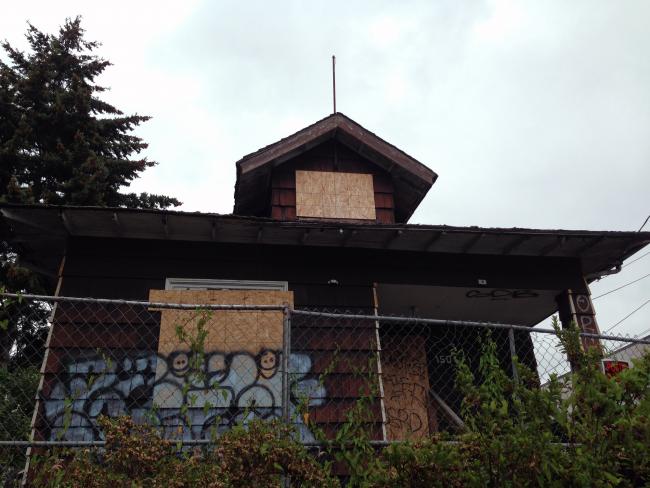They won’t be living there forever
Does it look like a 40 unit apartment building will fit here (1506 NW 61st Street)?
Wed, 09/03/2014
Dear Editor,
I admit, I used to be one of those local homeowners who blindly welcomed the wave of new housing development in Ballard. I had been a fast supporter of vertical housing, density and the growth of urban villages. I could see that I was directly benefitting, because with the new development also came welcomed changes like new restaurants and retail shops filled with the buzz of new life and energy--things that Ballard had been missing for decades. But to tell the whole story, my bias was formed after nearly a decade of living next door to a neighbor who let their house go derelict. I thought almost anything would be better for the value of our house other than a neighbor whose house looked like it was caving in on itself. And that became my narrative about all the change happening in Ballard. I scoffed at those who were trying to steer change because, ultimately it didn’t look like they were having much impact anyway, until it happened in my own backyard. Yes, I admit I became a NIMBY.
Last Monday, my neighbors encouraged me to attend a meeting hosted by the City of Seattle Department of Planning and Development (DPD) Northwest Design Review Board at the Ballard Community Center to discuss the soon-to-be tear down house at 1506 NW 61st Street. A five-member review board discussed a proposal for a four-story structure with 40 low-income residential 250-square foot rental units, with no parking and shared kitchens. My neighbors voiced concerns about losing natural light and views of Mount Rainier. Tess with Livable Ballard told the board that in Paris there’s a movement called, “The Right To Light,” where if homeowners lose natural lighting because of new development, they are monetarily compensated. Another neighbor voiced concern about the homeowners next door and how this looming project would result in the loss of privacy once 30-plus decks overlook their backyard, not to mention the possibility of losing old-growth trees once the roots are disturbed from creating basement dwelling units. And of course there were many who voiced concern about the impact on parking, but that’s when things started to get interesting.
Dale Kutzera, a new member to the board, in his first term, responded with a very self-assured and who-cares-about-the-loss attitude, “That neighbor won’t be living there forever.” Obviously he didn’t realize that the neighbor to the proposed development that he was referring to was in the room, or maybe he just didn’t care. I introduced myself and explained he was referring to was me. I am that neighbor, I am that homeowner. That’s when David Neiman, a longer-standing board member, who was leading the board, interrupted the design discussion to put me on the spot and ask if I would tell the entire room whether or not I have decided to stay in the neighborhood, because “rumor has it you aren’t planning to stick around, so would you please tell us all what your plan is?”
Despite the fact that the meeting that was already short on time and people were being asked by the board to keep their responses to 90-seconds or less, David Neiman insisted that it would be a good thing to clear up this matter and would I please address it. I was initially taken aback that my personal intentions were becoming a focus of the meeting - this did not seem appropriate. Based on my experience with these particular board members, I am left wondering what their motivation in this matter truly is. Are they on the board to field these types of projects, or are they just going through the motions and pressuring neighborhoods to simply fold and give up in the face of poor design? In reasoning that "The neighbor won't be living there forever," aren't they tacitly acknowledging that this new housing proposal will degrade the quality of the neighborhood? Is that how they justify new development - that the neighbors who are negatively impacted should just move away from the community?
Individual neighbors may be concerned about different aspects of neighborhood change, like natural lighting, old growth trees and lack of parking - but it's clear that this kind of development will result in a variety of negative impacts to the quality of life of the existing members of the community - how will they be compensated? A lot more has to be answered before this plan can move forward, but until then, we need to ask ourselves why even a few of the appointed members of the City of Seattle Department of Planning and Development (DPD) Northwest Design Review Board seem directly unsupportive of the neighborhood of Ballard and the residents who live next door to these new developments.
Sincerely,
Ballards newest NIMBY,
Avril McLane


